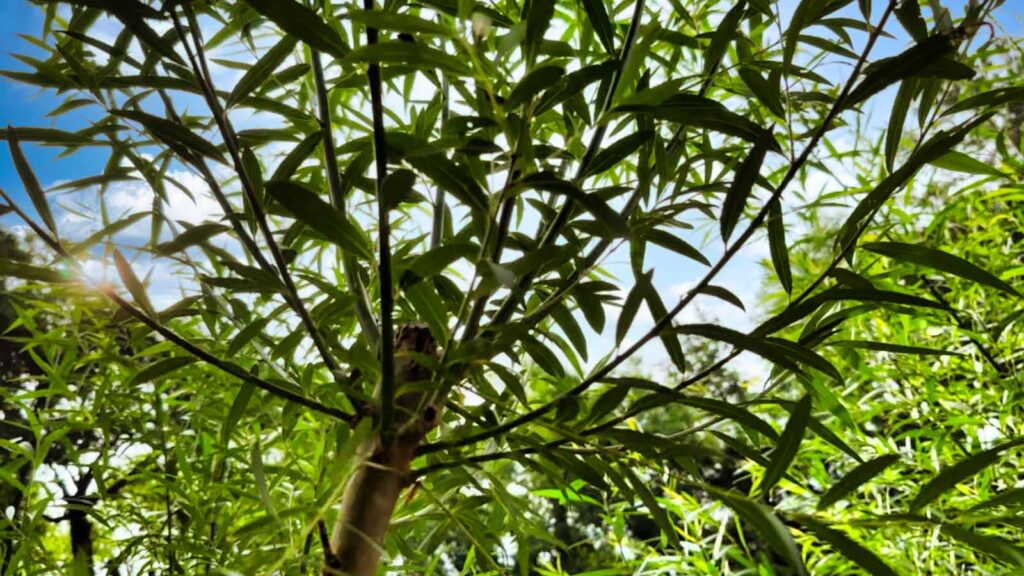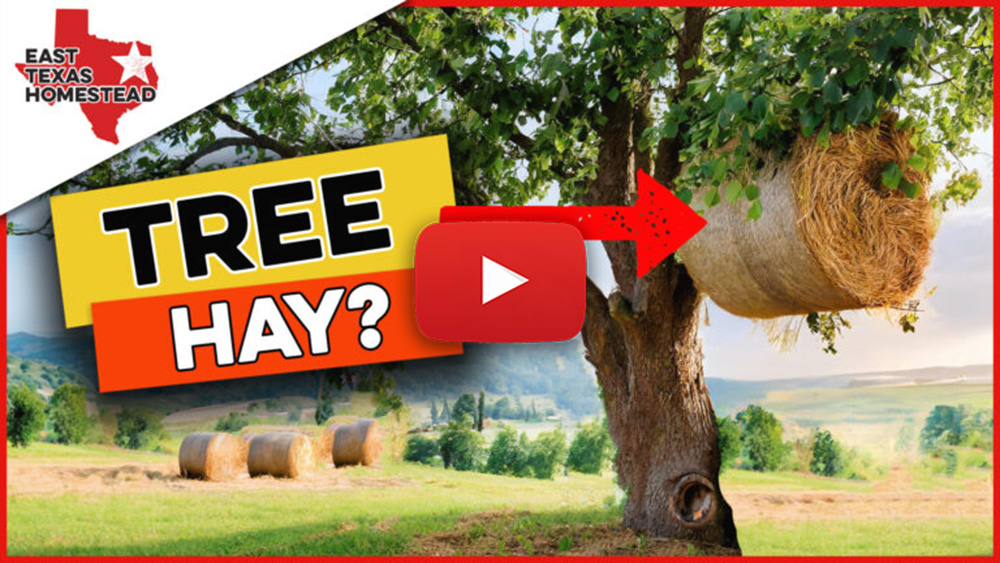Increase your sustainability with tree hay!
Today, we’re going to explore the world of sustainable livestock feeding with our guide to growing protein-rich Tree Hay. Not only is this a fantastic way to provide nutritious feed for your animals, but it’s also a method steeped in tradition and innovation.

Understanding Tree Hay and Fodder Trees
Tree Hay, also known in some circles as ‘fodder trees’, is a traditional method of feeding livestock that’s making a comeback in modern homesteading. These are specially pruned trees and shrubs that produce branches and leaves used as animal feed. This practice not only offers a sustainable and cost-effective food source but also improves tree health and longevity.
The Benefits of Tree Hay
The benefits of using Tree Hay for your livestock are numerous. It’s high in protein, especially important for the growth and health of your animals. By growing your own Tree Hay, you’re also ensuring a more organic and natural diet for your livestock, leading to better overall health and quality of life.
Our Homestead’s Approach
On our homestead, we focus on growing a variety of trees for Tree Hay, including hybrid willows, poplars, and white mulberries. These species are particularly beneficial as they’re fast-growing, high in nutritional value, and resilient to repeated pruning.

Coppicing and Pollarding: Key Techniques
Two important techniques in growing Tree Hay are coppicing and pollarding. Coppicing involves cutting the tree low to the ground to encourage new growth, while pollarding is done at a higher level. Both methods stimulate the tree to produce more shoots, which can then be harvested for feed.
Our Experience and Tips
We’ve been amazed at the results on our homestead. From just a few sticks planted a year ago, we’ve seen incredible growth. We usually prune our trees around head height for ease of harvesting. It’s important to do this before the trees expend too much energy on unnecessary growth.
Feeding Our Animals with Tree Hay
Our rabbits and goats thrive on the Tree Hay we produce. The process is straightforward – we cut the excess branches and directly feed them to our animals. It’s a joy to watch how they benefit from this natural and healthy diet.
Challenges and Rewards
While growing Tree Hay is rewarding, it’s not without its challenges. Learning the right pruning techniques and understanding the growth patterns of different tree species takes time. But the payoff is immense, providing your livestock with a healthy feed source and reducing your dependence on commercial feeds.
Final Thoughts
Growing Tree Hay or fodder trees is more than just a feeding method; it’s a lifestyle choice that aligns with sustainable, self-sufficient homesteading practices. It connects us with traditional farming techniques while providing for our animals in the most natural way possible.
Conclusion
If you’re interested in exploring this method for your homestead, remember, patience and persistence are key. We encourage you to start small, experiment with different tree types, and see the difference it makes in your livestock’s health and your overall homesteading experience.
I recommend checking out rareplantstore.com for quality supplies and expert advice. Although we’re not affiliated, we appreciate Nick’s commitment to quality and variety in homesteading resources.
Recent Posts
Spring 2025 Signature Solar Discount Code – 5% OFF EG4 6000XP Inverter (Limited Time!)
Looking for a Signature Solar discount code that works in 2025? Want to to save money on your next solar inverter purchase? You’re...
Parallel EG4 6000XP Install with EG4 WallMount Batteries
Welcome to the Ultimate DIY Off-Grid Solar Build For Beginners! If you’re planning an EG4 6000XP Install, this step-by-step guide will walk you...
How to Fix EG4 LifePower4 SOC Drift
Lithium SOC Drift Happens State of Charge (SOC) drift is a common issue you might face with your EG4 LifePower4 batteries. Over time,...



